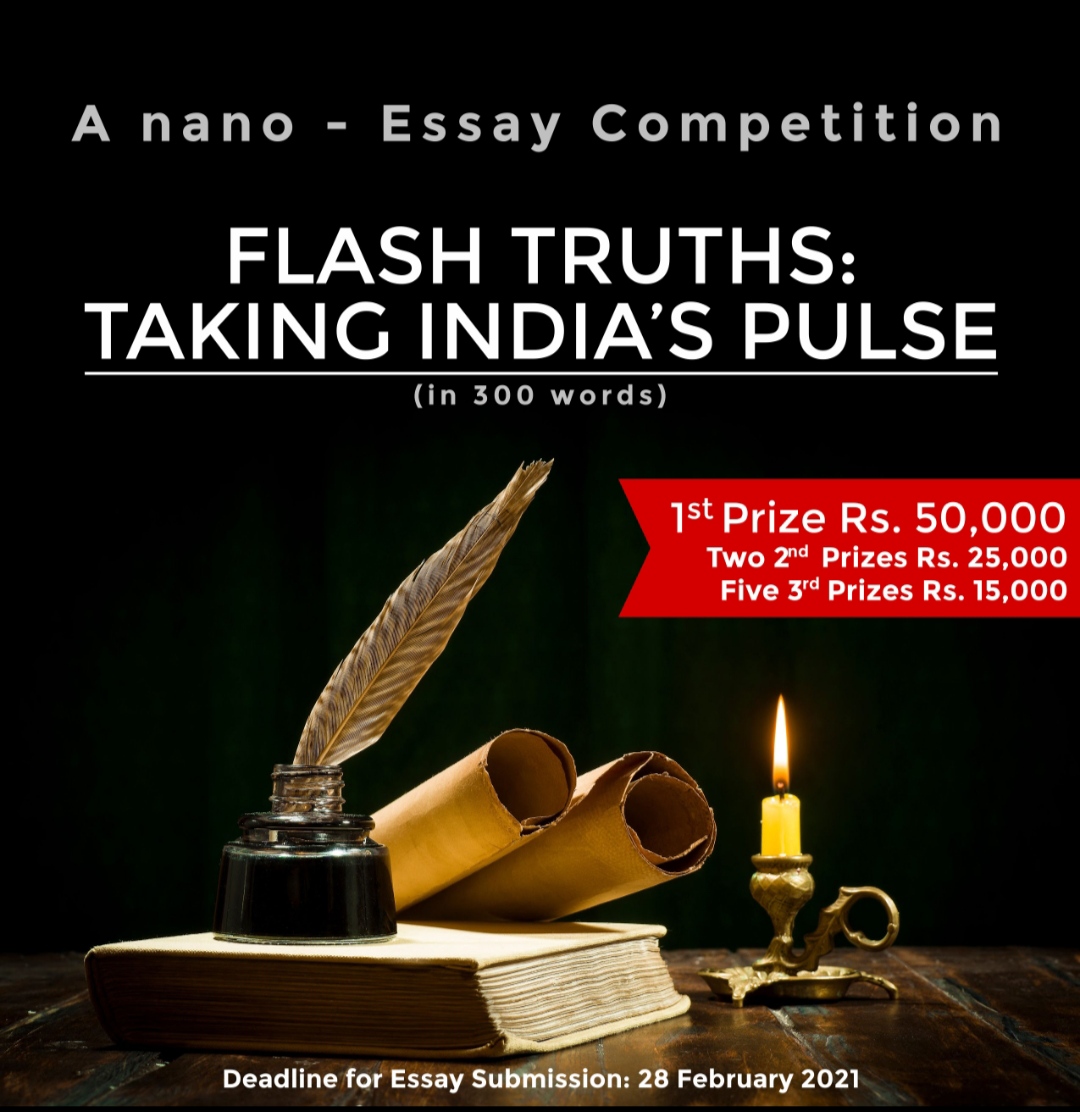- The nano-Essay Competition has now concluded with the payment of the prize moneys to confirmed Winning Essayists. Six of the eight provisional winners successfully met the terms of the Identity Verification/Essay Authenticity/Academic Credentials Protocol.
- Inevitably, there was a delay in determining confirmed prize winners because of the Chinese Covid Pandemic. It complicated the whole timeline for evaluating, judging and applying the Protocol.
- “Taking India’s Pulse” was a revealing exercise given the range of the subjects covered by the Essayists. Several institutions have expressed an interest in obtaining the raw data. Clearly, this trove has the potential to provide pointers to what participating metropolitan and regional authors think of India today. Meanwhile, I offer my initial (impressionistic) observations about the Entries.
- We promoted the Competition in India, Australia, Fiji, and some major cities in North America and Europe with a sizeable Indian diaspora. We stressed that it was open to one and all persons of Indian descent anywhere. No bars were of any kind – age, location, citizenship, mixed-blood– were placed. Nevertheless, the overwhelming number of Entries were from India.
- According to chats on the DMM site, and other anecdotal evidence, it was a widespread assumption that the Competiton was aimed at young people. The subjects, writing and tone of the Essays received, and the experiences described suggest that only a few ‘older’ people entered the Competition.
- It was frequently put to me that the large prize money ‘intimidated’ potential participants. It was considered that the prizes would go only to the highly educated people, so why make the effort?
- It is a measure of non-metropolitan participation that many essays were handwritten (scanned and sent) or were in regional languages.
- Reflecting the enduring Indian civilisational value that all rules are written in sand, many exceeded the word count.
- The most readable and insightful Essays were when the Authors focused on only one aspect of Indian Life:
- mong these, an extraordinary 25% of the Entries dwelt on the plight of the Indian woman in a patriarchal society. Some recounted personal deprivations, others took a sweeping, aggressive feminist approach to disempowerment, and others, more discerning, wrote along the #MeToo lines;
- The next largest contingent of authors was from minorities. Regrettably, but perhaps inevitably because of poor access to good education, many failed the ‘logistical’ parameters e.g. incomprehensible composition, etc.;
- Around 5% of entries came from the North East, mostly well written (presumably reflecting education at Christian-based educational institutions?). Invariably, they focussed on Indian racism (against their physical Chinese features) and the predatory attitudes of Indian males towards (whiter) North Eastern women;
- Muslim (judging by names) participation was minimal;
- An estimated 40% of entries were in the (poor) op-ed style seeking to achieve the impossible: Covering in 300 words the gamut of the Indian condition past and present – the Golden Age that was India; its glory today; how great India will inevitably be; what ails the country and what should be done. The majority were (uncritically) in praise of India – most likely reflecting the assumption that that is what we wanted to hear;
- India’s flawed education system was the subject of several Essays along predictable lines, describing the ills and offering simplistic solutions. However, none conveyed its effects on their progress and ambitions in life.
- Whether by design or simply misreading the Guidelines, very few writers focused on the consequences of current developments in the country for their Individual Lives. In a sense, this defeated the objective of taking the pulse of Indian Life by getting an idea about their views and feelings about being an Indian today in India.
- Notably, Indian Foreign and Security Policies received no mention at all. Interestingly enough, apart from stray subliminal references, even Pakistan and China were ignored. International developments and their consequences for Indian Life received no recognition at all.
- The most striking aspect of the whole exercise was the apolitical nature of the vast majority of the Essays. There were no overt references, rabid or otherwise, for or against political issues – not even to contentious and topical issues such as Hindutava, Federalism, communalism, etc. Politicians were ignored; Modi, the BJP, the Gandhi dynasty and other prominent parties and politicians received no mention. The principal focus was on social/cultural issues – family, women, unemployment, education, human rights, etc., but even here, without drawing direct positive or negative connections with domestic political developments or players.
- [The above point is puzzling. Mass media is full of acrimonious debates/talk shows and sensational news breaks about political issues on an hourly basis. An alien reading the quantum of Essays would get no idea of the political fever that blares forth incessantly in mainstream and social Indian media. Are media managers and advertisers entirely out of touch with the younger generation (55% under 24; 65% under 30)?]
- The overall impression from these writings, representing a mere drop in the sea of Indian Life, is that whatever the context, the tone of the Essays was largely optimistic about India, or at least not overly pessimistic about the current direction of social and economic developments in India.



